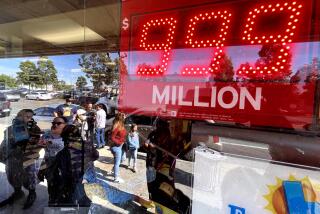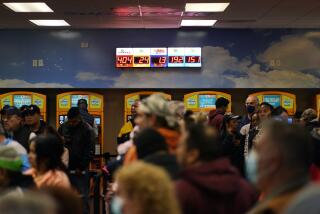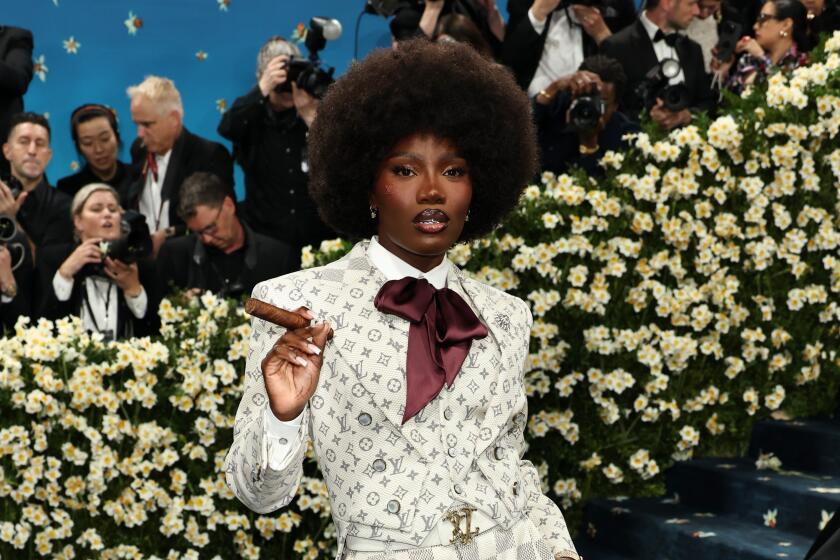CHARITY : With Britain’s New Largess Is Luck of the Draw : National numbers games parks controversy, doling out millions to arts venues for the elite while ignoring medical research.
- Share via
LONDON — As its popularity far outpaces expectations, Britain’s new National Lottery is proving to be an unexpected bonanza for everyone entitled to a share of its earnings.
But the vast funds suddenly available for “good causes” have provoked disputes involving the many organizations designated to receive the windfall benefits.
Under the government’s regulations, 28% of the lottery pie is divided equally among five groups: the arts, charities, sports, national heritage and the Millennium Fund for monumental projects.
The argument centers on the beneficiaries of the spoils. Various critics are aghast, for instance, that medical research has so far been allocated nothing--while stadiums are to be built with sports’ share of the funds.
And when the Heritage Lottery Fund--which shells out for historic sites and museums--paid $18 million this spring to Winston Churchill’s grandson for the British wartime leader’s papers, the news caused a serious outcry.
Similarly, some critics object to the arts’ lottery millions going to the refurbishment of opera houses and ballet theaters where tickets for performances command prices only the well-to-do can afford.
Further, second-string charities that collect locally complain that their sources of funds are drying up--because many small donors prefer to take a chance on the lottery with its potential for astronomical returns.
The National Lottery, which began in November, chooses by lot six numbers from 1 to 49. The bettor picks six numbers on a card costing one British pound, or about $1.60. If all six choices match the lottery selection, the bettor wins the jackpot--or a share of the jackpot, depending on how many bettors win. The payoff is usually several million dollars.
National Lottery ticket sales are expected to reach about $8 billion within a year, with $2.25 billion going to the charities. Of the remainder, 50% goes for prizes, 12% to the government and the rest to retailers and the operator.
In the field of the arts, a distributing commission set up by the Arts Council has granted funds to recipients such as the Sadler’s Wells Theatre, the Cambridge Arts Theatre and the British Film Institute.
But the arts funds are limited to capital improvements, and many commentators have complained that, despite millions being given to the opera, theater and ballet groups, ticket prices are still beyond the reach of most people.
In response, the Arts Council has suggested that lottery ticket buyers be given discounts to movies, operas, theaters, art galleries and museums.
*
Another controversy surrounds the exclusion of certain types of charities as recipients of lottery proceeds.
At first, medical facilities--including research--were ruled out on the grounds that health, like education, is directly funded from the Treasury.
However, after widespread criticism, the charities board says it will extend its largess to medical research.
But one cancer charity in Wales claims that it has had to shut its own lottery because of the national competition--thus losing about $2 million annually.
Diana Garnham of the Assn. of Medical Research Charities estimates that all charities will lose about $320 million a year as a result of competition from the lottery.
Most observers agree that a proper apportionment of lottery money will continue to be a subject of debate.
As the Arts Council’s lottery director, Jeremy Newton, said: “There is a lot more money than any of us would have believed. It might make sense to broaden the scope of what we can spend this money on.”
And National Heritage Secretary Stephen Dorrell said: “Lottery money is the public’s money. Funding decisions must be defendable to the public.”
More to Read
The biggest entertainment stories
Get our big stories about Hollywood, film, television, music, arts, culture and more right in your inbox as soon as they publish.
You may occasionally receive promotional content from the Los Angeles Times.










